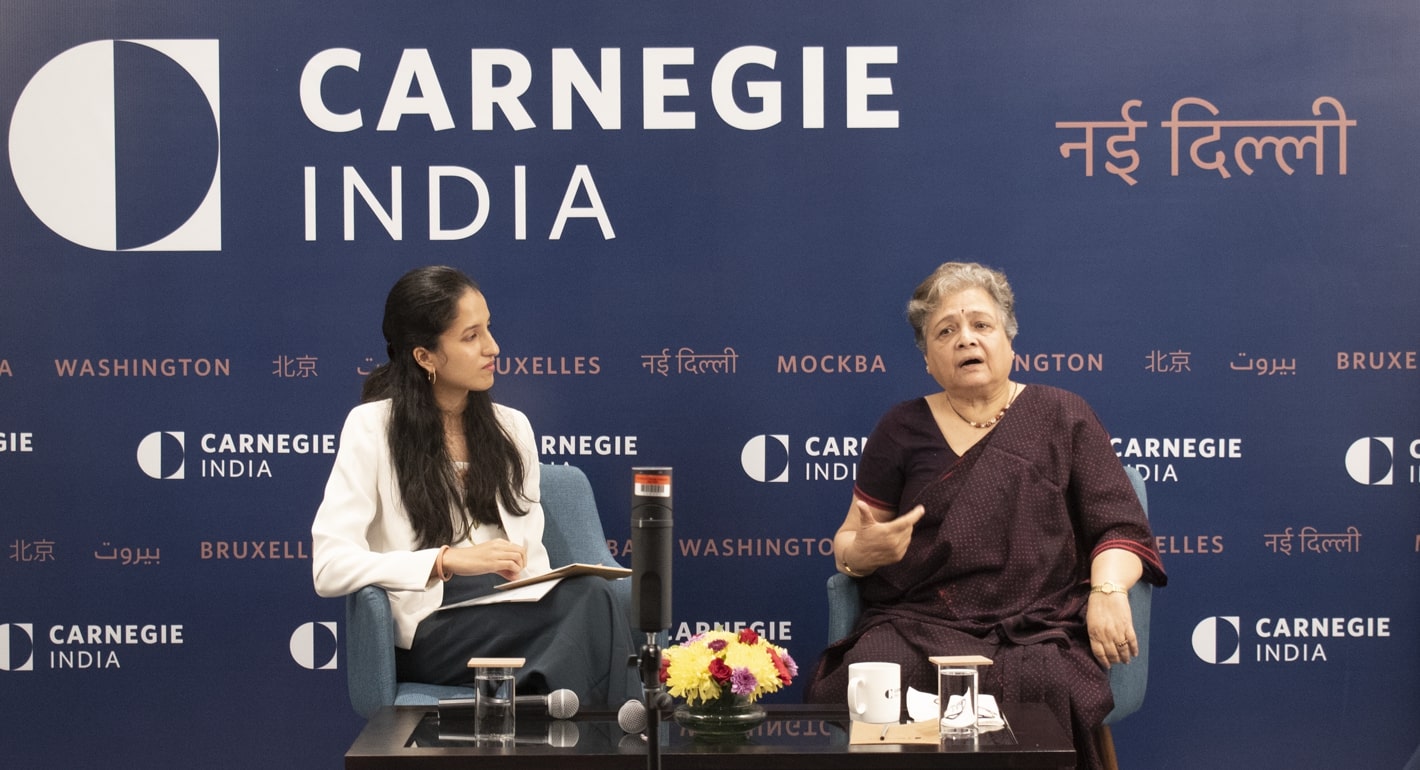Registration
You will receive an email confirming your registration.
The Anahita Speaker Series, an initiative by Carnegie India and the Vedica Scholars Programme for Women, is a monthly women’s speaker series that aims to highlight the experiences and achievements of women professionals who are giants in their fields.
The media plays a critical role in shaping a society's thoughts and attitudes. While increased access and the application of new technologies have transformed the Indian media industry to better reflect the country's multilingual geography, women remain underrepresented in this sector.
In the sixth edition of the Anahita Speaker Series, Mrinal Pande, a renowned journalist and author, drew on her experience to give us an insight into how the multilingual media industry in India, the English industry and the Hindi industry, has transformed over the past decades. The discussion was moderated by Sharanya Rajiv, a senior program coordinator and research assistant at Carnegie India.
DISCUSSION HIGHLIGHTS
- History of the Indian Media: The participants emphasized the relationship between the media and socio-political environment in a country. Tracing the evolution of the Indian media, the participants noted, before the colonial era, information was primarily passed along generations orally. The formation of the press only started after the onset of the British empire in India, they added. Participants drew attention to the establishment of the Serampore Mission Press by William Carey and highlighted that it revolutionized the process of producing and consuming text-based content. They noted that the Serampore Mission Press was limited to English-language publications, thereby deepening the division between the elites and the masses in India. The 1857 Bengal mutiny, they argued, emphasized the importance of understanding local languages and cultures. As a result, publications in the Urdu and Hindustani languages emerged. However, participants noted, despite the continued development of a multilingual media industry that now spans across print, television, and digital formats, the exalted status of the English language media still persists.
- Vernacular Media: Participants emphasized that while the English language news outlets cater to a very limited audience among the elite, those in vernacular languages have a wider reach. However, the latter don’t receive significant investments, they added. Underlining the importance of reaching out to the larger Indian market, participants emphasized that vernacular languages, which have their own temperament, audience, and structure, should not be neglected. To enhance accuracy while reporting on local issues and concerns, participants emphasized the creation of a multilingual data collection and analysis system instead of one that merely translating survey questions from English language to the vernacular and vice-versa.
- Gender Imbalance: Participants concurred that with greater awareness about gender disparities in the Indian media, women’s participation in the industry has increased, albeit slowly. They highlighted that, on the whole, women are better represented in the television media, compared to the print media, and in the English-language media, compared to the vernacular press. They explained that this can be traced back to the urban-rural divide since most television studios and leading English-language press houses are located in metro cities. Further, participants emphasized that despite their growing participation, opportunities for female television journalists plateau as they reach a certain age. Apart from the print and television formats, participants highlighted, the emergence of digital media has opened greater opportunities for women. However, participants cautioned that while women are better represented among online news portals, this sector offers lower compensations. Noting the intersectionality of gender and language, participants underlined that, women journalists in the vernacular press face greater challenges than those in English-language media organizations.
This event summary was prepared by Megha Gupta, a research intern at Carnegie India.
Speaker
Mrinal Pande
Mrinal Pande is a renowned journalist and author. She has worked in the media industry for several decades including as the chief editor of the Hindi daily Hindustan. She was appointed as the chairperson of Prasar Bharati, the official apex body of Indian broadcast media, with the initial term lasting till 2011. She was conferred with the Padma Shri, awarded for distinguished service, in 2006.
Moderator
Sharanya Rajiv
Sharanya Rajiv is a senior program coordinator and research assistant at Carnegie India. Her primary research focuses on India’s relations with Russia, Central Asia, and Central and Eastern Europe. She also coordinates the center’s events and internship program.

